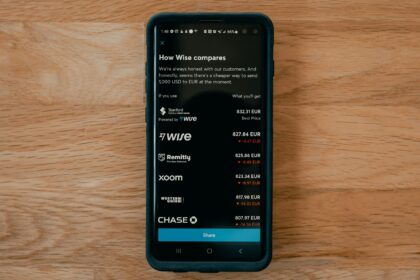Automating your savings and expenses can increase control over your budget while reducing the risk of missed payments. Setting up recurring transfers to separate accounts or investment platforms ensures that a fixed portion of income is saved without requiring daily attention. This approach helps build wealth steadily and avoids impulsive spending.
Technology-driven tools now offer customizable solutions to track income, bills, and subscriptions simultaneously. By linking bank accounts and credit cards, these systems categorize transactions automatically, providing clear insights into where funds flow each month. This reduces manual tracking efforts and highlights opportunities for cost-cutting.
Integrating alerts and rules within apps prevents overdrafts and notifies users about upcoming due dates or unusual charges. Automated adjustments based on personal goals–such as increasing saving percentages after a raise–make managing personal finances more responsive and adaptive. These features promote consistent progress without overwhelming complexity.
Money automation: simplifying financial management
Implementing automated systems for handling bills and expenses significantly reduces human error and saves time. Technologies such as blockchain-based smart contracts enable secure, transparent, and scheduled payments without manual intervention. For instance, utilities can integrate these solutions to ensure timely bill settlements, enhancing reliability and reducing late fees.
Automated expense tracking tools use advanced algorithms to categorize spending patterns and forecast future costs. By analyzing transaction data, these platforms help users optimize their savings strategies. In particular, machine learning models can identify recurring charges and suggest adjustments to reduce unnecessary expenditures.
Technological approaches to streamlined monetary handling
The adoption of decentralized finance (DeFi) protocols offers a practical example of streamlining asset allocation and budgeting tasks. Through programmable financial instruments on blockchain networks, individuals can automate investments or savings contributions with predefined rules. This method eliminates the need for constant oversight while maintaining full control over funds.
Robotic process automation (RPA) further simplifies accounting workflows by integrating with banking APIs to reconcile statements automatically. Such applications are especially valuable for small businesses managing numerous invoices and payments simultaneously. The reduction in manual reconciliation improves accuracy and frees up resources for strategic planning.
- Smart contract-enabled recurring payments ensure punctuality without user input.
- AI-driven analytics provide personalized saving recommendations based on spending history.
- Integration of digital wallets facilitates seamless transactions across multiple platforms.
Case studies reveal that firms adopting automated billing systems report up to a 30% decrease in overdue payments within six months. Similarly, individuals using app-based budget trackers increase their monthly savings by an average of 15%. These outcomes demonstrate how technology can effectively enhance fiscal discipline without requiring deep technical expertise from users.
Setting up automated bill payments
To establish automated bill payments, begin by identifying recurring expenses such as utilities, subscriptions, or loan repayments. Utilizing secure online banking platforms or specialized fintech applications allows for scheduling payments directly from your account on predetermined dates. This process reduces the risk of late fees and enhances regularity in settling obligations.
Integrating technology into payment workflows not only streamlines cash outflows but also supports budgeting efforts. For instance, many banks offer alerts and dashboards that track upcoming bills, enabling users to anticipate deductions and adjust their funds accordingly. This proactive approach preserves savings by avoiding penalties and optimizing fund allocation.
Technical steps for configuration
First, link your bank account or digital wallet to the payment service provider with encrypted authentication methods such as two-factor authentication (2FA). Next, input creditor details accurately–account numbers, billing addresses, and due dates–to ensure seamless transactions. Many platforms support bulk uploading of bills via CSV files or API integration for enhanced efficiency.
Once set up, review the schedule regularly to accommodate any changes in billing amounts or frequency. Some systems utilize machine learning algorithms to predict variable charges based on historical data, providing alerts when deviations occur. Leveraging these insights helps maintain control over expenditures without manual intervention.
- Use strong credentials: Protect accounts with complex passwords and biometric verification.
- Monitor transaction logs: Verify each automatic debit aligns with expected amounts.
- Set spending limits: Prevent overdrafts by configuring caps within your financial app.
The deployment of blockchain technology introduces an additional layer of transparency and security in automated payments. Smart contracts can trigger payments only upon fulfillment of predefined conditions, reducing disputes between payers and providers. Pilot programs in several countries demonstrated reduced processing times from days to minutes while maintaining immutable records for auditing purposes.
A practical example involves utility companies deploying automated debit linked with IoT meters that report consumption in real time. Payments are then adjusted dynamically based on actual usage rather than estimates, enhancing accuracy in expense planning. Adopting this method leads to measurable reductions in administrative costs while empowering consumers through detailed consumption reports accessible via mobile apps.
The transition towards scheduled payments encourages disciplined stewardship over personal resources. By minimizing manual inputs and leveraging technological advancements, individuals can focus on optimizing savings strategies instead of routine bill settlements. Continuous improvements in digital infrastructure promise further enhancements in reliability and user experience across various payment ecosystems worldwide.
Automating Monthly Savings Contributions
Setting up recurring transfers to a dedicated savings account is one of the most effective methods for ensuring consistent accumulation of funds without manual intervention. Leveraging technology such as bank-integrated scheduling tools or third-party financial applications allows users to define fixed amounts and intervals, typically monthly, which are automatically deducted from checking accounts. This approach reduces human error and the risk of skipping deposits due to forgetfulness or busy schedules.
Advanced platforms also offer options to synchronize savings contributions with bill payments, improving overall cash flow coordination. For example, some systems analyze upcoming bills and adjust contribution amounts dynamically, preventing overdrafts while maintaining steady growth in savings balances. This intelligent synchronization exemplifies how automation can optimize both expense tracking and fund allocation simultaneously.
Technical Insights and Practical Applications
The backbone of automated savings lies in programmable payment instructions processed via secure APIs between banks or financial institutions. Technologies like Open Banking frameworks facilitate seamless connectivity, enabling instant updates on transaction status and balance changes. Additionally, blockchain-based smart contracts are emerging as tools that enforce predetermined saving rules transparently and immutably, minimizing the need for intermediaries.
Case studies demonstrate that users employing automated savings mechanisms tend to increase their annual saved capital by 20-30% compared to manual processes. One practical example is integrating automatic contributions with payroll systems where a fixed percentage of income is directed into interest-bearing accounts immediately upon salary receipt. Such setups reduce cognitive load while enhancing discipline in personal fund preservation.
Tracking expenses with finance apps
To optimize your budget and increase savings, using expense tracking applications is highly recommended. These tools leverage advanced technology to categorize transactions automatically, track recurring bills, and provide clear visual reports on spending habits. This approach minimizes manual effort and enhances oversight over personal funds, making it easier to identify unnecessary expenditures and allocate resources effectively.
Modern expense trackers often integrate with multiple bank accounts and credit cards through secure APIs, enabling real-time synchronization of data. By utilizing such connectivity, users receive up-to-date transaction histories without manual input. This continuous updating supports precise monitoring of outflows and improves the accuracy of monthly budgeting plans.
How automation improves expense tracking
Automation in these apps streamlines the process by detecting patterns in spending behavior and setting reminders for upcoming bills. For example, some platforms use machine learning algorithms to classify transactions into categories such as utilities, groceries, or entertainment. This classification assists users in understanding where most of their money is spent without needing to label each item manually.
Additionally, automation enables setting custom alerts when spending exceeds predefined limits or when bill due dates approach. A case study from a 2022 fintech report showed that users who activated automated notifications reduced late payments by 35%, directly contributing to improved credit scores and fewer penalties.
- Real-time categorization: Helps maintain an organized record of all expenses.
- Bill management: Tracks scheduled payments to avoid missed deadlines.
- Savings goals: Allows setting targets based on past spending trends.
The role of technology extends beyond simple transaction logging; many applications use blockchain-based security protocols ensuring data integrity and privacy during synchronization with financial institutions. This adds an extra layer of protection against unauthorized access while maintaining transparency in data handling processes.
An effective strategy involves regularly reviewing app-generated reports to adjust spending habits proactively. Some applications also offer scenario analysis features that simulate how changes in bill payments or discretionary costs affect overall savings potential over time. Incorporating this forward-looking perspective helps users stay aligned with long-term financial objectives while maintaining control over daily expenditures.
Conclusion: Optimizing Portfolio Rebalancing Through Scheduled Interventions
Implementing scheduled portfolio rebalancing significantly enhances capital allocation by maintaining target risk profiles and maximizing returns. Employing automated triggers based on predefined thresholds or fixed intervals reduces manual oversight, allowing individuals to preserve their savings more effectively while avoiding drift from strategic allocations.
For example, leveraging blockchain-based smart contracts can execute rebalancing orders without intermediaries, ensuring timely adjustment of asset weights and minimizing transaction costs. This approach not only streamlines the process but also integrates seamlessly with recurring bill payments and other cash flow commitments, reinforcing disciplined stewardship over personal wealth.
- Scheduled rebalancing mitigates emotional decision-making by enforcing routine adjustments aligned with investment goals.
- Smart contract automation offers transparency and immutability, critical for trust in decentralized financial systems managing diverse portfolios.
- Integration with cash flow management ensures liquidity is preserved for regular expenses without compromising investment objectives.
The trajectory of portfolio rebalancing will increasingly intertwine with algorithmic strategies powered by machine learning, capable of dynamically recalibrating exposure based on evolving market indicators. Such advancements promise to transform passive maintenance into proactive optimization frameworks that anticipate volatility and adjust allocations accordingly.
In sum, adopting scheduled rebalancing methods combined with cutting-edge automation technologies presents a robust framework for prudent stewardship of assets. This paradigm empowers users to maintain consistent growth trajectories while safeguarding against portfolio imbalances that could erode long-term savings potential.





